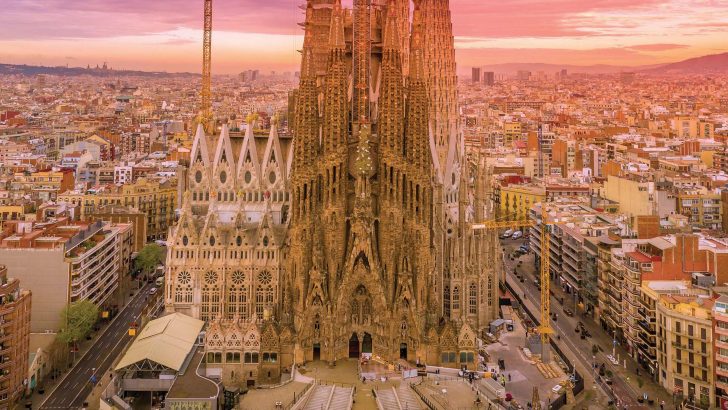With ongoing construction guided by the vision of ‘God’s architect’ Antoni Gaudí, Barcelona’s La Sagrada Família is already one of God’s finest houses.
The project was designed in 1882 by another man, Francisco de Paula del Villar, and his plan was more in-keeping with the prevailing architecture of the time. Neo-Gothic dreams saw ogival windows, buttresses, flying buttresses and a pointed bell tower feature in the original designs.
Technical differences saw this architect leave the project, to be replaced by the man whose name was to become synonymous with the site: Antoni Gaudí. His main sources of inspiration were to be light, nature, the Bible and the Liturgy, all of which feature heavily in his greatest work.
“The Temple of the Sagrada Família will be bright,” he said, speaking of the role light has to play in his work.
“Religious emotion will not come from the fear of shadows only just penetrated by a ray of light, but will be born from the bright mystery of the harmony of light, from the sense of wellbeing that comes from sunlight filtering through a tree with the thousands of nuances of its leaves.
“It will, thus, be the Temple of harmonious light. Everything must be designed to highlight the architectural forms, to give a perfect vision of the symbolic decoration throughout the inside of the basilica and, therefore, reach the greatest spiritual efficiency.”
Taking up the project in 1883, Gaudí initially worked on it alongside other buildings. This would be the case until 1914, when he would begin working on the Temple exclusively until his death in 1926.
Gaudí lived to see only the Nativity Façade completed, but his writings and quotes demonstrate his comfortability with passing the project along to others – an essential part in any great work, he believed.
Struck by a tram as he crossed the street June 10, 1926, he was buried in the chapel of Our Lady of Carmel in the temple’s crypt, where he remains to this day. Gaudí was put down the path for canonisation by Barcelona’s then-archbishop Ricard Maria Carles in 1998, and he’s currently recognised as a Servant of God by the Church.
Since then, guidance of the basilica has passed through the hands of many up to today, with November 7, 2010 seeing Pope Benedict XVI consecrate the basilica for religious worship and designating it a minor basilica.
The project is due for completion in 2026.


 The Nativity Façade, which depicts Christ’s birth and the events surrounding it in its artwork, is the only part of the temple Gaudí lived to see completed.
Started in 1891, work concluded with the Saint Barnabas bell tower in 1925, a year before Gaudí’s death.
The Nativity Façade, which depicts Christ’s birth and the events surrounding it in its artwork, is the only part of the temple Gaudí lived to see completed.
Started in 1891, work concluded with the Saint Barnabas bell tower in 1925, a year before Gaudí’s death.